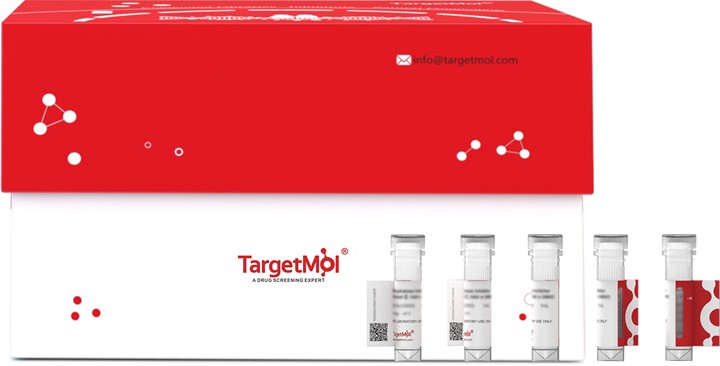 Your shopping cart is currently empty
Your shopping cart is currently empty
CTLA-4 Protein, Mouse, Recombinant (Flag)
Mouse Cytotoxic Tlymphocyte 4(CTLA-4,CD152), is a type I transmembrane T cell inhibitory molecule. Within the ECD, Mouse CTLA-4 shares 68% aa sequence identity with human. CTLA4 is similar to the T cell costimulatory protein CD28 since both of the molecules bind to CD80 and CD86 on antigen-presenting cells. CTLA4 transmits an inhibitory signal to T cells, whereas CD28 transmits a stimulatory signal. Intracellular CTLA4 is also found inregulatory T cells and may play an important role in their functions. T cell activation through the T cell receptor and CD28 leads to increased expression of CTLA4. Genetic variations of CTLA4 have been associated with susceptibility to systemic lupus erythematosus(SLE), Gravesdisease(GRD), Celiac disease type3(CELIAC3) and Hepatitis B virus infection(HBVinfection).

CTLA-4 Protein, Mouse, Recombinant (Flag)
| Pack Size | Price | USA Warehouse | Global Warehouse | Quantity |
|---|---|---|---|---|
| 10 μg | $35 | 7-10 days | 7-10 days | |
| 20 μg | $55 | 7-10 days | 7-10 days | |
| 50 μg | $110 | 7-10 days | 7-10 days | |
| 100 μg | $192 | 7-10 days | 7-10 days | |
| 200 μg | $342 | 7-10 days | 7-10 days | |
| 500 μg | $745 | 7-10 days | 7-10 days | |
| 1 mg | $1,180 | 7-10 days | 7-10 days |
Product Information
| Biological Activity | Activity has not been tested. It is theoretically active, but we cannot guarantee it. If you require protein activity, we recommend choosing the eukaryotic expression version first. |
| Description | Mouse Cytotoxic Tlymphocyte 4(CTLA-4,CD152), is a type I transmembrane T cell inhibitory molecule. Within the ECD, Mouse CTLA-4 shares 68% aa sequence identity with human. CTLA4 is similar to the T cell costimulatory protein CD28 since both of the molecules bind to CD80 and CD86 on antigen-presenting cells. CTLA4 transmits an inhibitory signal to T cells, whereas CD28 transmits a stimulatory signal. Intracellular CTLA4 is also found inregulatory T cells and may play an important role in their functions. T cell activation through the T cell receptor and CD28 leads to increased expression of CTLA4. Genetic variations of CTLA4 have been associated with susceptibility to systemic lupus erythematosus(SLE), Gravesdisease(GRD), Celiac disease type3(CELIAC3) and Hepatitis B virus infection(HBVinfection). |
| Species | Mouse |
| Expression System | HEK293 Cells |
| Tag | C-Flag |
| Accession Number | P09793 |
| Synonyms | Cytotoxic T-lymphocyte protein 4, Cytotoxic T-lymphocyte-associated antigen 4, CTLA-4, CD152, Ctla4 |
| Amino Acid | Ala37-Asp161 |
| Construction | Ala37-Asp161 |
| Protein Purity | Greater than 95% as determined by reducing SDS-PAGE. (QC verified) |
| Molecular Weight | 20-25 KDa (reducing condition) |
| Endotoxin | < 0.1 ng/µg (1 EU/µg) as determined by LAL test. |
| Formulation | Lyophilized from a solution filtered through a 0.22 μm filter, containing PBS, pH 7.4. |
| Reconstitution | Reconstitute the lyophilized protein in distilled water. The product concentration should not be less than 100 μg/ml. Before opening, centrifuge the tube to collect powder at the bottom. After adding the reconstitution buffer, avoid vortexing or pipetting for mixing. |
| Stability & Storage | Lyophilized powders can be stably stored for over 12 months, while liquid products can be stored for 6-12 months at -80°C. For reconstituted protein solutions, the solution can be stored at -20°C to -80°C for at least 3 months. Please avoid multiple freeze-thaw cycles and store products in aliquots. |
| Shipping | In general, Lyophilized powders are shipping with blue ice. Solutions are shipping with dry ice. |
| Research Background | Mouse Cytotoxic Tlymphocyte 4(CTLA-4,CD152), is a type I transmembrane T cell inhibitory molecule. Within the ECD, Mouse CTLA-4 shares 68% aa sequence identity with human. CTLA4 is similar to the T cell costimulatory protein CD28 since both of the molecules bind to CD80 and CD86 on antigen-presenting cells. CTLA4 transmits an inhibitory signal to T cells, whereas CD28 transmits a stimulatory signal. Intracellular CTLA4 is also found inregulatory T cells and may play an important role in their functions. T cell activation through the T cell receptor and CD28 leads to increased expression of CTLA4. Genetic variations of CTLA4 have been associated with susceptibility to systemic lupus erythematosus(SLE), Gravesdisease(GRD), Celiac disease type3(CELIAC3) and Hepatitis B virus infection(HBVinfection). |
Dose Conversion
Calculator
Tech Support
| Size | Quantity | Unit Price | Amount | Operation |
|---|

Copyright © 2015-2025 TargetMol Chemicals Inc. All Rights Reserved.



